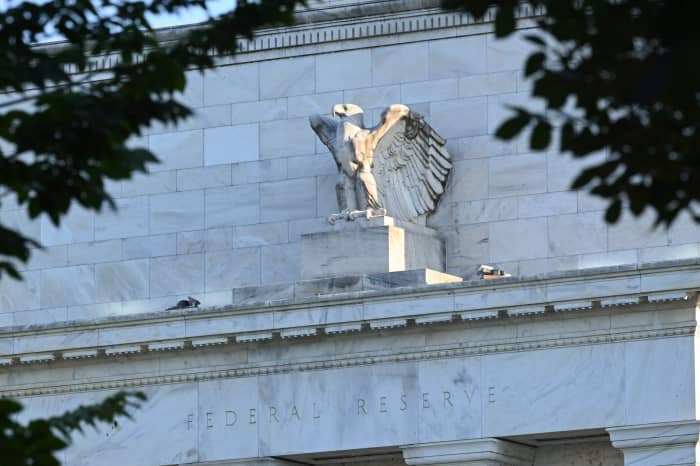A previous version of this story gave an incorrect day for the release of the November Fed minutes. The story has been corrected.

Mandel Ngan/Agence France-Presse/Getty Images
The Federal Reserve won’t meet again until the next rate-setting meeting on Dec. 13-14, but November’s meeting minutes due Wednesday afternoon will be watched by investors for clues as to how high the benchmark interest rate needs to go and how long it will stay there for the inflation to come back down to the central bank’s 2% target.
David Donabedian, chief investment officer of CIBC Private Wealth U.S., doesn’t think the minutes are likely to deliver a blow to the stock market.
“We’re going to see the debate and the discussions around the two-step process, in other words, the importance of slowing the pace of rate hikes, but also not appearing to have declared victory on inflation,” Donabedian said. “There were certainly discussions about the appropriateness of slowing the size of the rate hikes, but also the appropriateness of remaining firm in that terminal rate. I think that’ll be the gist of it.”
“They’re going to be scrutinizing the inflation numbers and the recession indicators, and that ultimately will be data dependent,” he added.
Wall Street’s main indexes started the volatile month with investors reacting to remarks from Fed Chair Jerome Powell, who sent a clear signal in his news conference on Nov. 2 that interest rates will move higher and stay there longer than previously anticipated. Though cooler inflation figures in the following week saw stocks log the biggest one-day advance since 2020, some Fed officials’ subsequent hawkish comments soured investors’ hopes for a forthcoming central bank policy shift.
U.S. stocks finished higher on Tuesday with the Dow Jones Industrial Average DJIA, +1.18% gaining 1.2%, while the S&P 500 SPX, +1.36% and the Nasdaq Composite each advanced 1.4%.
See: These stocks are burning cash fast and might need to raise capital soon, Goldman Sachs flags
However, Michael J. Kramer, founder of Mott Capital Management, worried that the Fed minutes could strengthen the U.S. dollar and weaken equity markets. He contends that stock-market investors haven’t fully priced in the hawkish message delivered by Fed officials last week.
St. Louis Fed President James Bullard Thursday talked about the potential for the policy rate to head to somewhere around a 5%-7% range. The Minneapolis Fed’s Neel Kashkari also said that he wants to be sure inflation has stopped climbing before he would support stopping interest rate hikes.
If stock-market investors have been paying attention, the minutes shouldn’t deliver a significant market shock tomorrow, Kramer wrote in a Monday note. But the problem is that, while bond and currency markets reacted and stopped falling last Thursday, the equity market was too focused on options expiration to pay attention to hawkish Fed officials, he said.
Read: This isn’t a ‘close your eyes and buy anything’ kind of market
Traders widely expect the Fed to raise rates by 50 basis points in December, with some still betting on a 24% chance of a 75 basis points hike, according to CME Group’s FedWatch Tool.
